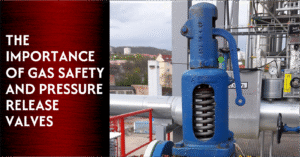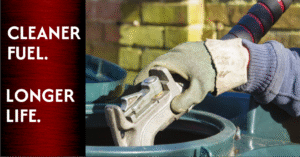Introduction to Tigerloop®
Tigerloop®, manufactured by Tigerholm, is an advanced oil de-aerator designed to remove air bubbles from an oil heating system, ensuring efficient combustion and prolonging the lifespan of the equipment. If you are unfamiliar with how an oil de-aerator works or why it is beneficial, this comprehensive Tigerloop® oil de-aerator guide will walk you through everything you need to know.
In this guide, we will explore the causes and issues associated with air in an oil heating system, how Tigerloop® effectively removes air and its associated benefits, the installation process, and troubleshooting common problems. We will also introduce an alternative product, the GOK De-Aerator System, and explain the different Tigerloop® models available.
To jump straight to the installation guide, click here.
Understanding the Problem: Air in an Oil Heating System
Any oil heating system consists of an oil reservoir (or tank) and a burner, with a suction line drawing oil from the tank to the burner. However, oil naturally contains dissolved air, which can be released as bubbles when exposed to negative pressure. This phenomenon is similar to opening a carbonated beverage, where carbon dioxide escapes as bubbles when pressure is reduced.
Negative pressure is a common occurrence in oil heating systems, particularly when the system requires high suction to transport oil through long pipes, lift it to higher levels, or pass through coarse piping. Additionally, air can enter the system due to loose connections or if the oil tank runs dry. Once air enters the system, it travels with the oil into the pump, causing several issues such as:
- Poor combustion
- Increased soot build-up
- Higher wear and tear on components
- Greater oil consumption
- Potential equipment failure
Two-Pipe Systems: A Partial Solution
One traditional method for addressing air in an oil heating system is a two-pipe system, which includes a return line that transports unburned oil and air back to the tank. While this design helps mitigate air buildup, it does not completely eliminate the issue. Air bubbles can still travel as far as the nozzle, creating an air pocket that disrupts combustion efficiency.
Additionally, two-pipe systems introduce an environmental risk: the return line is pressurized, meaning any leaks could result in oil spills that require costly clean-up. This makes the two-pipe system a less-than-ideal solution.
How Tigerloop® Works
Tigerloop® is installed between the oil tank and the burner, ensuring that all oil passes through the de-aerator before reaching the burner. The device continuously and automatically removes air from the oil, ensuring that only air-free oil enters the burner. This process eliminates common issues such as incomplete combustion, excessive noise, soot build-up, and smoke emissions.
By functioning as a one-pipe system with the efficiency of a two-pipe system, Tigerloop® offers a safer and more effective solution to air removal, ensuring optimal system performance and longevity. Tigerloop® oil de-aerator guide explains how the device improves heating efficiency and prevents common issues caused by air bubbles.
Are There Alternatives? The GOK Oil De-Aerator System
While Tigerloop® is a well-known and trusted oil de-aerator, an alternative solution is the GOK De-Aerator System. Though it lacks the Tigerloop® branding, GOK models offer similar performance and are a cost-effective alternative. If you are uncertain about which de-aerator to choose, our knowledgeable sales team is available to help guide you to the best option for your needs.

Key Benefits of Using Tigerloop®
Installing a Tigerloop® oil de-aerator comes with several advantages:
- Cleaner, More Efficient Combustion: Removing air bubbles enhances combustion efficiency, reducing soot and smoke.
- Prolonged Equipment Lifespan: Eliminating air reduces wear and tear, extending the life of the burner and pump.
- Lower Fuel Consumption: A de-aerated system operates more efficiently, decreasing overall oil usage.
- Safer and More Environmentally Friendly: Unlike a two-pipe system, a single-pipe configuration with Tigerloop® reduces the risk of leaks and contamination.
- Simpler and Cost-Effective Installation: With only one pipe required between the Tigerloop® and the tank, installation is straightforward and minimizes potential points of failure.
- Automatic Air Removal: Tigerloop® constantly recycles unburned oil, continuously de-aerating it before sending it back to the burner, reducing strain on the system.
Do You Need a Tigerloop®?
Any oil-fired heating system can benefit from a Tigerloop®, particularly in applications such as:
- Steam boilers
- Furnaces
- Industrial ovens
- Commercial dryers
- Incinerators
If your system relies on burning oil, installing a Tigerloop® enhances efficiency, safety, and environmental sustainability while also reducing maintenance and repair costs.
Different Tigerloop® Models
Tigerloop® is available in two main models:
- Tigerloop® Original: The third-generation version of the original de-aerator, designed for use with a separate oil filter.
- Tigerloop® Combi: This model integrates an oil filter into the Tigerloop® unit, reducing the number of connections and potential leakage points. The filter insert can be replaced as needed.
- Tigerloop® Twin: Designed for use in high-capacity systems, the Tigerloop® Twin is capable of handling larger burner capacities by doubling the de-aeration function, making it ideal for industrial applications where a single unit may not be sufficient.
Installing a Tigerloop®
Proper installation is crucial for optimal performance. Here are key installation guidelines:
- Install the Tigerloop® as close to the burner as possible while avoiding temperatures above 140°F (60°C).
- Mount the unit upright and use oil-resistant lines between the pump and the Tigerloop®.
- OFTEC recommends installing the unit outside when feasible.
- Ensure proper pipe sizing by considering factors such as pipe resistance, length, oil burner nozzle capacity, and suction head.
- Always hire a qualified technician to perform the installation in compliance with local regulations and building codes.
Troubleshooting Common Issues
1. Excessive Foam in the De-Aerator
- Check for suction leaks in the lines and connections.
- Ensure the oil tank is not empty.
- If burner capacity is too large, consider installing a second Tigerloop® in parallel.
2. Noisy Oil Pump
- Inspect lines and connections for suction leaks.
- Verify that the suction head is not excessively high.
3. Oil Not Being Drawn from the Tank
- Follow the same steps as for a noisy pump.
- Ensure the bypass plug is installed in the oil pump.
4. De-Aerator Lower Chamber Full of Oil
- This is normal. When minimal air enters the system, the air pocket disappears, and the chamber fills with oil. The air pocket will reappear under different conditions.
Cleaning and Maintenance
Tigerloop® is a sealed system that should not be opened. To maintain it:
- Occasionally wipe the unit with a dry cloth.
- Never use cleaning fluids or alcohol, as these can damage the device.
Conclusion
This Tigerloop® oil de-aerator guide highlights the essential role Tigerloop® plays in improving the efficiency, safety, and longevity of oil heating systems. Whether you are installing a new heating system or upgrading an existing one, investing in a Tigerloop® ensures optimal performance and reliability.
If you have any questions about Tigerloop® or the GOK De-Aerator System, our team is happy to assist you in selecting the right product for your needs!









